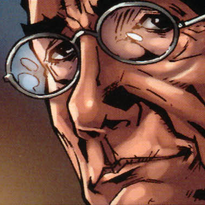A rift is emerging among the Supreme Court’s conservatives — and it could thwart the court’s recent march to expand gun rights.
On one side is the court’s oldest and most conservative justice, Clarence Thomas. On the other is its youngest member, Amy Coney Barrett.
The question at the center of the spat may seem abstract: How should the court use “history and tradition” to decide modern-day legal issues? But the answer may determine how the court resolves some of the biggest cases set to be released in the coming days, particularly its latest foray into the Second Amendment right to bear arms.
If the court adheres to a strict history-centric approach, as Thomas favors, it will likely strike down a federal law denying firearms to people under domestic violence restraining orders.
But Barrett recently foreshadowed that she is distancing herself from that approach. If she breaks with Thomas in the gun case, known as United States v. Rahimi, and if she can persuade at least one other conservative justice to join her, they could align with the court’s three liberals to uphold the gun control law.
It’s these kinds of whitewashing bullshit articles that are why the court isn’t even more unpopular. There’s a concerted effort to make the court appear reasonable. It’s not. Barrett might ask a question here or there during oral argument that sounds reasonable or moderate, but she still almost always votes with the extreme right wing majority. She is not an impartial jurist, she’s a hateful Christian extremist with a normal-sounding voice. Don’t fall for it.
While that may very well all be true, her written concurring opinion pretty bluntly excoriated the originalist doctrine and was a pretty clear and unabashed criticism of Clarence Thomas.
The reason it’s news is because she seemed to fully believe in originalist interpretative methodology during her tenure at SCOTUS, but she now seems to be changing her mind about it’s viability as conservative judicial orthodoxy. It doesn’t make her suddenly noble, but it indicates that she might become another swing vote along with Roberts on future cases.
You should actually read the article and read her opinion. It’s a pretty aggressively critical shift. If you have been following SCOTUS decisions and positioning, it’s newsworthy.
That’s all well and good, but remember,
concurring opinion
…is what matters at the end of the day.
They were all concurring opinions. The decision was unanimous.
It is no different than Republicans in Congress making symbolic votes when they know that a bill will pass without their support. I could not care less about what stuff she says in a concurring opinion. It will be newsworthy when she actually rules separately from the rest of the heritage foundation appointees.
K
Everything you said is true, but I still think her shift is being overblown. The opinion in which she criticized Thomas’s historical approach was a concurring opinion, she agreed with the result, but not the methodology. The result is what the vast majority of Americans will see, not that she happened to take a different road to get to the same place.
And in the same concurring opinion, she had the audacity to hold up stare decisis, despite her hair-trigger willingness to overturn precedent in critical cases like Dobbs.
I follow the court, and read the article. I guess I’m just way more cynical than you. I appreciate your moderating tone though, I hope I’m wrong about her.
You just caught me on a slightly less cynical day I guess. I share your concern and, generally, your cynicism, but I’m trying to find a little hope on this one. I would also note that every opinion was concurring on this case. It was unanimous.
Regardless, thanks for you kind tone.
I read the article, and my take was more that I get a feeling she is gearing up to go against originalist doctrine FOR A REASON. Possibly she thinks something in the original Constitution is too liberal and anti-Jesus, so she wants to vote against things that follow that. It’s hard to put in words my feeling, but it wasn’t that this was a good thing.
Read the opinion and recognize the context. It was a direct criticism of another, more conservative justice. Take the W when it presents itself.



